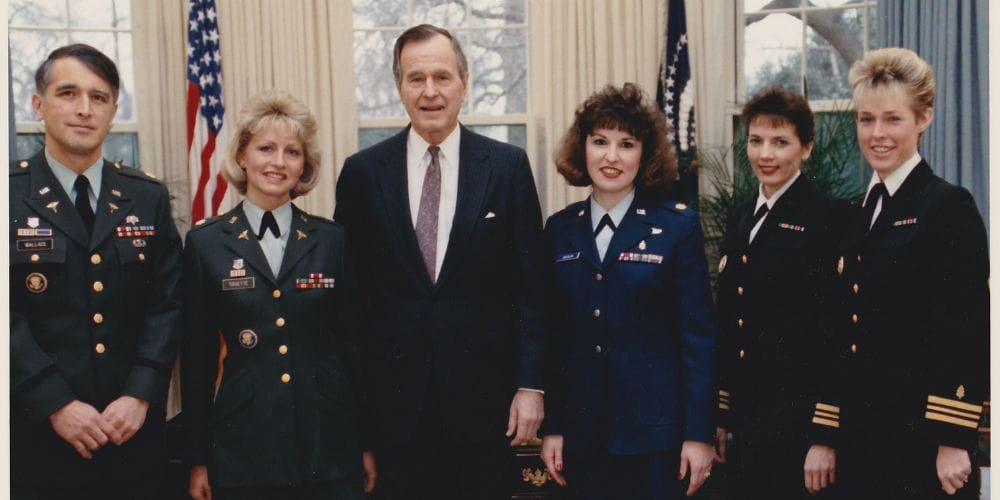CONHI professor has served US presidents, UTA students
Wherever the president of the United States goes, a member of the White House Medical Unit follows to attend to their health and wellness needs.
Retired Air Force Major General Kim Siniscalchi, now a professor of practice at The University of Texas at Arlington, served in that role for two presidents: George H. W. Bush and Bill Clinton. She also was the first military nurse to be promoted directly from the rank of colonel to two-star general. Her storied military health care career spanned 34 years of active-duty service, including time as an Air Force assistant surgeon general and multiple command tours leading an expeditionary medical group supporting the global war on terrorism.
“It was an incredible career and journey,” she said. “I feel very honored to have had the opportunity to serve our nation.”
She began her service in 1979 at a time when there were few women serving in the military. The career took her around the globe, with 25 moves and stops in Texas, California, Virginia, Nebraska and the Washington, D.C., area when she was assigned to the intensive care unit at Andrews Air Force Base.
In 1989, just as President Bush was taking office, the White House Medical Unit was looking for an Air Force nurse with experience in critical care. The hospital commander at Andrews thought Siniscalchi would be a good fit and nominated her for a position. She went through an extensive interview process that included meetings with Barbara Bush and members of the Secret Service.
“I was so excited about the opportunity. If that’s where it ended, I thought, ‘Wow, what an experience,’” she said. “It was several weeks later that I got the phone call saying I was selected—and the journey began.”
The White House Medical Unit is the elite group of medical personnel who serves the president, the first family, the vice president, White House staff and military members who support the president. Being on the unit requires both exceptional skills and security clearance. Members of the unit ride on Air Force One with the president or travel ahead to prepare for medical contingencies at the president’s destination.
Siniscalchi remained at the White House through Bush’s term and stayed on for much of the first year of Clinton’s administration. She and her fellow unit members remained in touch with the Bush family.
“We had the opportunity to stay connected with him on a personal basis,” she said. “It was such an honor to be a part of their lives.”
After her work in the White House, Siniscalchi dedicated her career to bringing more quality health care to not just military members, but retirees and their families as well. During the conflicts in Iraq and Afghanistan, she assisted in rethinking medical logistics and mobility to accelerate the time getting wounded service members to the critical care they need. She also spearheaded multiple initiatives to provide comprehensive follow-up care to wounded service members.
“It’s comforting to those who are deployed because they know that if something happens to their child or spouse, everything is in place to get the care they need,” she said.
Today, she serves a different group: the students and faculty of UTA’s College of Nursing of Health Innovation. As a professor of practice and a member of the college’s senior leadership team, she works to advance new strategies, policies and projects that enhance its academic mission.
“The experiences I’ve had helped me develop as a leader and clinically as a nurse,” Siniscalchi said. “As I work with students now, there are so many things I can share. At this point, my goal is to be able to give back and grow the next generation. That is what it’s about. It’s why I still work.”

